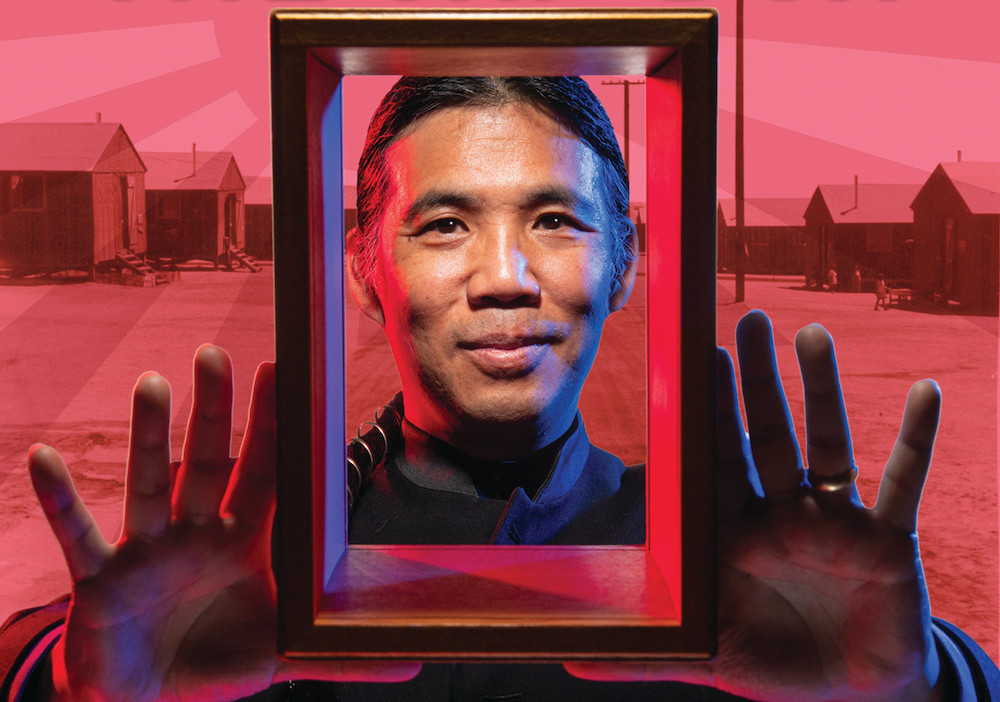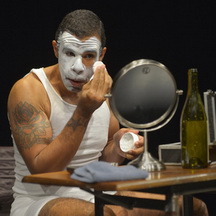David Hirata begins “The Box Without A Bottom,” his performance monologue currently at The Marsh in Berkeley, with a story about taking his daughter to eat sushi for the first time. During their meal he needs to explain to his daughter that she is half-Japanese. She replies, “You mean I’m half Japanese and half Regular?”
It’s a telling moment for Hirata, and one that many people from various ethnic and racial groups feel while living in this hodge-podge of American demographics that causes so much anxiety and unhappiness but is also one of our country’s best features.
Hirata’s performance delves into his personal struggles with identity but also traces a history of Japanese and American relationships in general. “The Box Without A Bottom” has great charm because it addresses these charged issues through storytelling, and more specifically through stage magic.

Hirata tells us about his attraction to illusion as a kid growing up in Baltimore, visiting the local magic shop where the owner shows him various prop magic tricks and encourages his fascination with the strange world of knotted ropes, handkerchiefs that change color and coins that disappear.
That world of illusion is tinged with an exoticism that both attracts and confuses. As Hirata points out our current world of illusion has Victorian roots, carrying with it not only black silk top hats that produce rabbits and bouquets and flowers but also a host of vintage tricks that evoke 19th century orientalism. Among the Egyptian, Arabic and Chinese references that typify prop magic of illusions’ history is one trick that truly came from Japan and is linked to the first Japanese to come to the United States after Commodore Perry sailed into Edo Bay in 1853. Perry used gunboat diplomacy to urge the Japanese into opening its doors to the West and acquiescing to trade with the United States.
Among the first Japanese cultural ambassadors to the United States was the magician, Namigoro Sumidagawa. The illusionist brought with him an ancient Japanese trick: a bottomless box that made scarves appear, disappear and change colors. That box, when traded by Sumidagawa to the Victorian magician Wellington Tobias, who played a make-up–induced Japanese magician for thirty years of his career, would become the Jap Box, a staple of Western illusionists – its name signifying decades of racism.
How Hirata weaves this history into the story of his family delineates a history of disappointment and racism in the US. But he does this with a lightness and poignancy that is both effective and captivating. The scarf that disappears into and out of the bottomless box becomes in his storytelling the scarf that a child waves to her relatives in the Japanese internment camps during World War II. There is no attempt to shame the audience, but rather the stories are a rather bittersweet portrayal of his family’s pain, which is easily extended to the Japanese community as a whole.
Throughout the monologue Hirata performs a series of magic tricks. They offer a direct illustration of the magic stories told but they also distract from the pain of prejudice felt, softening its cruelty. They are also the weakest part of the show. Hirata is not a great magician. His shaking hands tend to distract and I for one worried over whether he would achieve each trick, or whether the cards, coins or props might go spilling all over the stage. The last place a magician wants the audience’s attention is on his hands, though his shaking hands are understandable given the truths he offered so generously.
I expect with time and practice those shaking hands will disappear and the monologue’s message will be delivered with additional grace.
– Jaime Robles
“The Box Without A Bottom” continues at The Marsh Berkeley through December 1. Additional performances may be scheduled in January. For tickets and information, visit themarch.org
